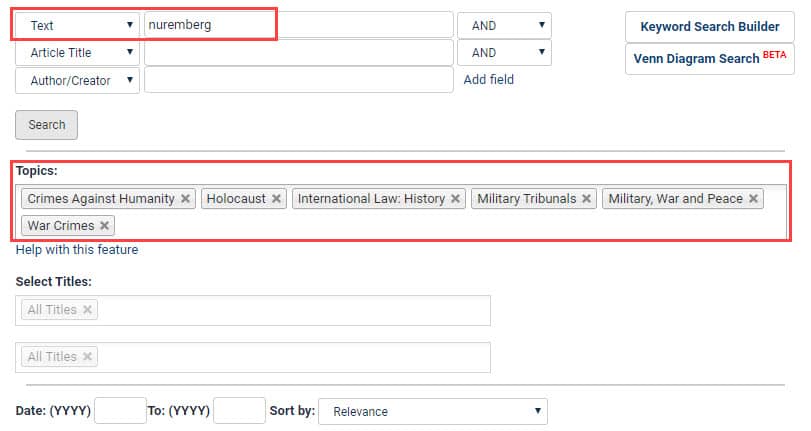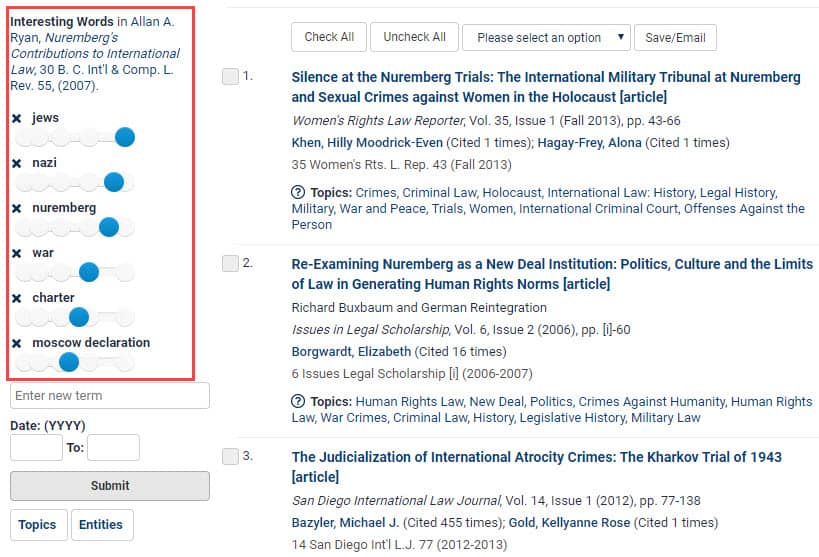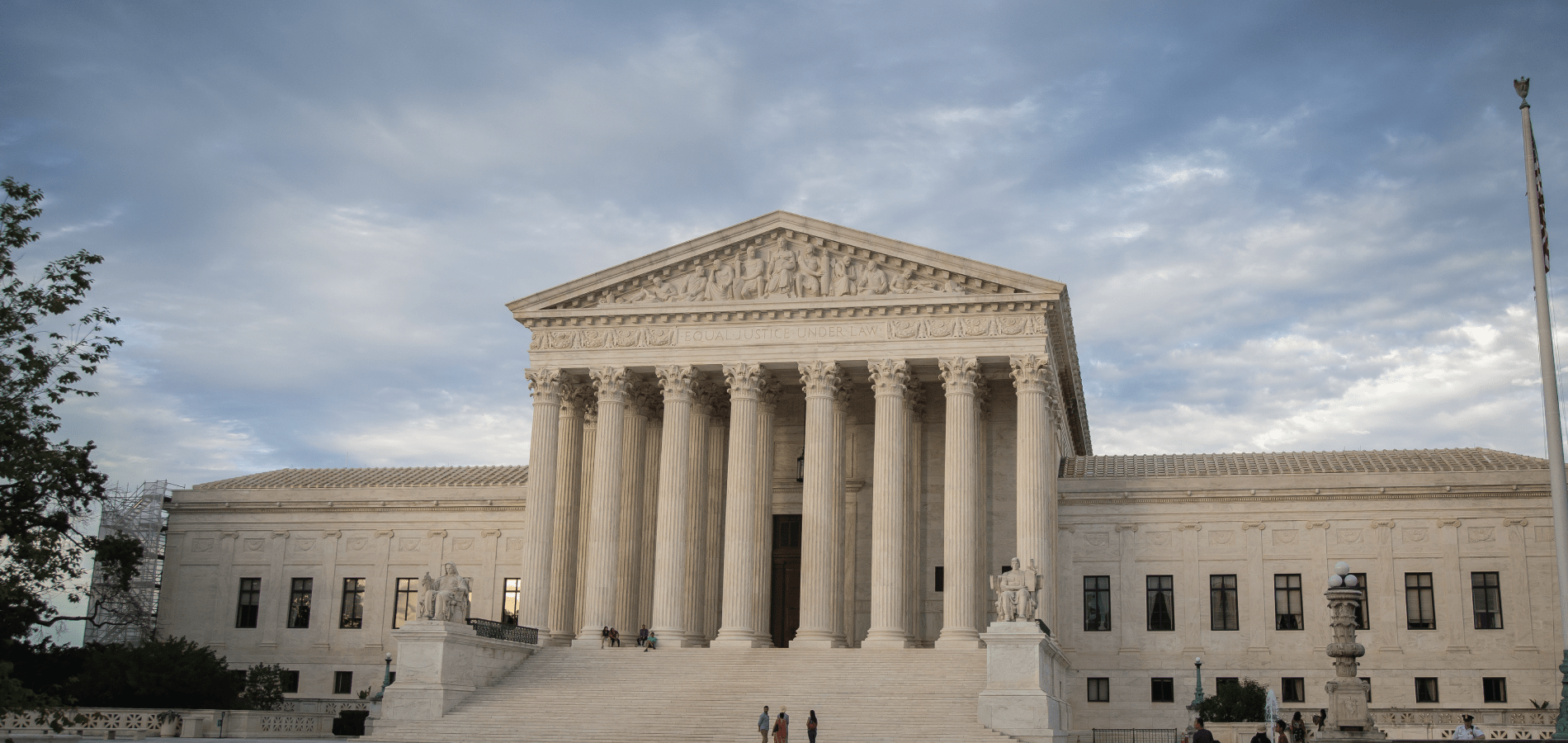Seventy-three years ago today, the International Military Tribunal of the Nuremberg trials prosecuted the major parties responsible for the Holocaust and other World War II atrocities. The creation of the Nuremberg trials, their framework, and their outcomes were not only unprecedented but highly controversial. Learn about the trials and their impact with HeinOnline’s History of International Law database.
History of International Law*
Equipped with nearly 2,000 titles and more than 1.2 million pages of content dating back to 1690, History of International Law covers a variety of subjects such as war and peace, law of the sea, international arbitration, events at the Hague, and much more. Learn more about History of International Law and start your free trial by clicking the button below.
*This database is included at no additional cost to the HeinOnline Academic package.
The Nuremberg Trials
Background
In 1933, Adolf Hitler was appointed as Chancellor of Germany. Soon after, he made efforts to expand the role of the position, including the ability to introduce any law without the consent of Parliament. In 1934, after the death of the German President, Hitler used his unchecked legislative power to combine his role with that of the president.
While pushing an aggressive foreign policy, Hitler and his government institutionalized discrimination against groups considered “undesirable” based on their ethnicity, religion, politics, or sexual orientation. Throughout World War II, Hitler and his Nazi regime escalated beyond discrimination, facilitating the unlawful incarceration, forced labor, medical experimentation, and genocide of these “undesirables.” During this time, Hitler’s regime murdered a total of 17 million people, including 6 million Jews.
Immediately following World War II, a series of thirteen trials were held, bringing to justice those responsible for these war crimes and others.
Origin of the Idea
In 1943, the major Allies of World War II (the Soviet Union, United Kingdom, and United States) met at the Third Moscow Conference to discuss their cooperative war efforts. The Conference resulted in the Moscow Declarations, one of which was the Declaration on German Atrocities. Largely drafted by Winston Churchill, the declaration issued a “full warning” that the Allies would do everything in their power to punish the Nazis for their war crimes.
Later that year, the Allies met again at the Tehran Conference, where Soviet leader Joseph Stalin proposed the simple execution of the responsible German parties. While U.S. President Franklin D. Roosevelt entertained the idea, British Prime Minister Winston Churchill suggested a trial in the location that the crime was committed. In 1945, the major Allies met again at the Yalta Conference where they reiterated that the punishment of Nazis would be imminent, regardless of the method.
In the same year, President Roosevelt died and Harry S. Truman assumed office. President Truman favored the judicial approach for bringing major members of the Nazi government to justice, and thus the Nuremberg trials were born. In August 1945, the European Advisory Commission issued the London Charter, outlining the rules and procedures for the Nuremberg trials.
The International Military Tribunal
The first of 13 Nuremberg trials commenced on November 20, 1945 with the International Military Tribunal. Twenty-four individuals and seven organizations were brought before the Tribunal, each with four charges:
- Conspiracy toward crimes against peace
- Committing crimes against peace, such as waging wars of aggression
- War crimes
- Crimes against humanity
Each of the four major Allied powers (United States, Soviet Union, United Kingdom, and France) contributed a judge, an alternate judge, and a prosecutor to the Tribunal. For the United States, these members were Francis Biddle, John J. Parker, and Justice Robert H. Jackson respectively.
Users may look to the 42-volume official record of the International Military Tribunal as a comprehensive compilation of documents and transcripts relating to the trial. Within this record, discover some of its most critical moments.
Important Moments from the Trial:
- The first day of the trial begins.
- The second day of the trial opens with Chief Prosecutor Justice Robert H. Jackson’s speech lasting for several hours.
- The Hossbach Memorandum is presented, a document requested by Adolf Hitler to be considered his last will and testament.
- Otto Ohlendorf (commander of a Nazi death squad) is questioned, and he admits to the murder of 90,000 Jews. Read Ohlendorf’s chilling description of his squad’s mass executions, as well.
- The first testimony of a Holocaust survivor is heard.
- The first witness for the defense takes the stand.
- Hermann Goring, the second most powerful Nazi after Hitler, takes the stand.
- Rudolf Hoss, the former commandant of Auschwitz, admits to mass murder.
- Secret aspects of the 1939 German-Soviet Non-Aggression Pact are revealed, including protocol for dividing Eastern Europe between the two.
- Albert Speer, the only defendant to take responsibility for his actions, takes the stand. Known as “the good Nazi” due to his plausible deniability, it was revealed decades later that his statements in this record were almost entirely false.
On October 1, 1946, the tribunal handed down its judgment for each organization and individual involved, with the following outcomes:
- Four out of the seven organizations were found guilty and declared “criminal,” including the Nazi party, the Hitler Cabinet, and the Gestapo (the secret police of Nazi Germany).
- Of the 24 individuals accused, 12 were sentenced to death, seven were given prison sentences ranging from 10 years to life, three were acquitted, and two were not charged.
- Of the 12 sentenced to death, 10 were hanged. One was sentenced in absentia (he had died before the trial), and Hermann Goring, Hitler’s right-hand man, committed suicide the night before his hanging.
Subsequent Nuremberg Trials
The following Nuremberg trials were held between 1946 and 1949. Though 3,887 cases were considered, only 489 went to trial. The cases were grouped into 12 trials according to their alleged area of criminal activity—medical, legal, economic, political, etc. The first of these—the Doctor’s Trial—is well known for bringing justice to those who participated in Nazi human experimentation and euthanasia. Of the 23 medical professionals accused, seven were sentenced to death and nine received prison sentences of varying lengths. Learn more about the infamous Nazi doctors and their medical crimes.
Of the 1,672 defendants throughout all 12 trials, 1,416 were found guilty. By the end of the trials, nearly 200 German war criminals had been executed, and nearly 300 were sentenced to life in prison.
Users may look to the 15-volume official record of the individual indictments, judgments, and administrative materials resulting from the twelve trials.
Impact on the Law of War
Legacy of the Nuremberg Trials
The Nuremberg trials changed the course of international law by serving as a model for future international tribunals, present-day courts at the Hague, and the trials of later genocides such as those in former Yugoslavia and Rwanda. Furthermore, the trials initiated a global movement toward establishing an International Criminal Court, which was finally achieved with the Rome Statute nearly fifty years later. Finally, the process and procedures at Nuremberg were a major influence on the following international documents, as well:
- The Genocide Convention (1948)
- The Universal Declaration of Human Rights (1948)
- The Geneva Conventions (1949)
- The Nuremberg Principles (1950)
- The Convention on the Non-Applicability of Statutory Limitations to War Crimes and Crimes against Humanity (1968)
Researching the Impact of the Trials
Users may look to the Law Journal Library to further research the impact of Nuremberg on international law. HeinOnline uses machine learning to extract topics and entities (relevant locations, persons, organizations, etc.) from individual articles. Utilize these extracted topics for easy searching.
Navigate to the Advanced Search option hyperlinked in blue under the main search bar. Enter any relevant keywords into the text boxes, and then search for relevant subjects within the “Topics” field. For researching the impact of Nuremberg on international law, many relevant topics are available. Craft an advanced search by modeling the below to yield more than 7,400 results.

Click on any article within the Law Journal Library to use the More Like This tool, found in the upper right-hand corner of any article page. Users will be redirected to “interesting words” in the article, as determined by an algorithm. View a list of similar articles based on these words or adjust the terms and their respective weights to narrow the search. For example, view similar articles generated by interesting words from Nuremberg’s Contributions to International Law.

Did You Enjoy This Post?
Like what you see? Check out some of our similar works below:
- Secrets of the Serial Set: The Pacific Theater of World War II
- Building America: The Powerful Story Behind “We the People”
- Remembering the Fallen: Researching the Tragedy of 9/11
- One Small Step for Man, 50 Years of Innovation for Mankind
- Chernobyl: Not Just Another HBO Drama
Don’t miss out! Hit Subscribe to have blogs like these sent directly to your inbox.



